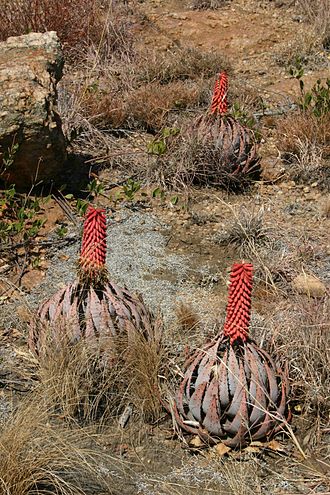After a long time without normal weather, spring has finally arrived to Iceland.
I will make another post of it, but before please let me share with you my latest achievement in plant conservation.
I was busy buying seeds of species in danger of extinction and sowing them. Many endangered species are obviously very rare and impossible to find for sale, but since there are many thousands in risk of extinction, some of them can eventually have seed for sale online (like in www.rarepalmseeds.com)
Over these last days, I managed to germinate seeds of two endangered species and one critically endangered species:
 |
| Abies pinsapo, Spanish fir |
- One is Abies pinsapo, a conifer species, a fir, only growing in moutains of the south of Spain and parts of Morroco. Despite conservation efforts, its population is still decreasing, mostly because of forest fires and the warming of the climate, which has increased mortality of the trees. Twenty years ago, the tree was more abundant. In Morroco, the tree is threatened by both deforestation (to grow cannabis) and forest fires. Overall, the fir is only present in 5 locations, so it's not a very good situation. I germinated one seed by placing it in a container with moist gravel in the fridge, after one month. Since this tree is from a Mediterranean mountain climate, I think it could be eventually be grown in a few spots in Portugal, where climate is still more temperate. I
 |
| Aloe peglerae |
- A second species is Aloe peglerae. It is native to only 3 locations in South Africa, and although some part of them are protected areas, the population of this aloe is decreasing in number mostly due to illegal collection and also urbanization. This aloe germinated in a gravel mix containing a bit of soil, only barely moisted, placed in partial sunlight at 19-23ºC
- The last species is Matelea orthoneura, this vine is native to Ecuador coastal forests. From the family of the milkweeds and is pollinated by flies in a similar fashion to orchids. It is critically endangered, since it is only known to be present in two small locations. And it's habitat has been destroyed at a fast speed and it continues. The two locations are near farms and villages, so this is no surprise. Thus this species can become extinct in soon, and as far as I know there is no cultivation or conservation efforts of it. I germinated two seeds by placing them on the surface of a mix of equal parts of soil and gravel covered by a bag, at 29ºC over a week, and then 20ºC for another week. If I end up sucessfully growing it, I must find ways of propagation to distribute this vine to other people interested in ensuring this species does not become extinct.
- A few weeks ago I germinated Bauhinia bowkeri. This is a beautiful legume species only native to South Africa. The seed germinated in a tray containing moist gravel and soil, at 29ºC, after 2 weeks. I am now growing it near a light. The species is classified as vulnerable, but it hasn't been throughly accessed. Some decades ago the species was growing in several locations but presently it's only known at a single location and only 20 mature trees. Therefore this species could be well critically endangered. And I must protect my seedling at all costs! Guess now there are 21 known plants in the world!
The other threatened species I am already growing for a couple of months are:
 |
| The biblical gift to Jesus, the frankincense tree. Now it could also become extinct in the near future |
- Boswellia sacra, frankincense (highly difficult to germinate and grow past seedling stage; currently the tree are overexploited and in bad health due to that, it is not yet endangered but at the current rate it could become endangered in a few years, and extinct by end of the century if not soon - I germinated the seed by placing a mix of limestone, gravel, pumice and sand, over 29ºC for 3 weeks. Although a biblical species, frankincense is very rarely cultivated, and if it is, only as a bonsai; as far as I know, outside of the Middle East, I know only of one person growing it, and that is in Arizona). I could technically grow my frankincense tree if not in bonsai form, in the drier parts of Portugal.
 |
| Aloe dichotoma, an amazing aloe tree! |
- Aloe dichotoma (an outstanding yet vulnerable status aloe from South Africa and Namibia - germinated at 25ºC on moist gravel; it's rare but sometimes cultivated, including for its conservation purposes. However its population in the wild is reducing, mostly due to climate change, so it is important to continue its preservation efforts)
 |
| A forest of jubaea chilensis, called coquito nut |
- Parajubaea torallyi and jubaea chilensis, these two palms I got in ebay, but there are increasingly endangered in the wild (especially the parajubaea), despite ocasional cultivation and even an interesting use as a coconut-like fruit from a tree which is relatively hardy when grown in Mediterranean climates; apparently they can be grown in climates like California, Texas and South Europe. They are native, respectively, to steep ravines in Chile and moist ravines in a small part of Bolivia.



No comments:
Post a Comment